Apply now to join our next cohort of Community Science Fellows and Community Leads!
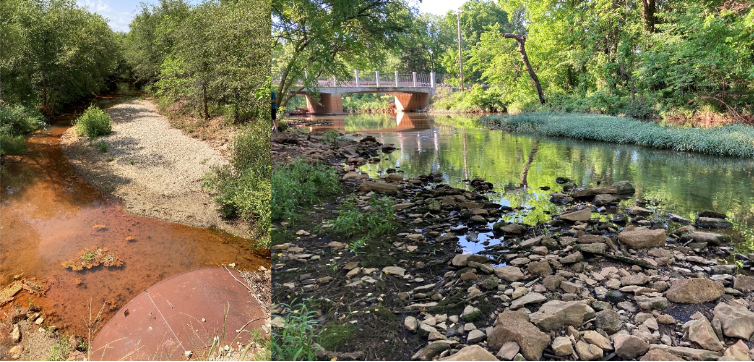
Tar Creek in the minefield immediately downstream of largest acid mine water discharge and adjacent to chat piles that leach metals into the creek as runoff; downstream of the minefield, Tar Creek flows behind a local Miami, OK community college in an area prone to toxic flooding that is visited by residents and college students (Photos by Rebecca Jim / LEAD Agency)
Due to heavy metal contamination from previous mining and ongoing recurrent flooding, risks associated with everyday activities in Ottawa County, Oklahoma are unknown. For example, people have no guidance about the safety of eating wild and previously planted foods from different locations here. Local Environmental Action Demanded (LEAD) Agency has X-ray Fluorescence (XRF) machines and hydrolabs for testing soil and water. Scientist/s will translate standard operating procedures (SOPs) for equipment into use scenarios so that community members can conduct testing. Test data will enable community education signs in safer areas so people know what can be done safely there and will prompt calls in riskier areas for remediation to make them safer.
Local Environmental Action Demanded (LEAD Agency) is a community-led non-profit environmental justice organization founded in 1997. The organization focuses on ensuring that the northeastern Oklahoma region is safe for all community members. LEAD Agency addresses how community members interact with and are shaped by the environment and environmental changes. The organization has longstanding partnerships with institutions and universities such as the Harvard School of Public Health, Tulsa University, and Mount Sinai Hospital.
LEAD Agency has an office in Ottawa County, the northeasternmost county in Oklahoma. The county’s 31,000 residents live in several small towns and surrounding rural areas. While many residents identify as white, the county is home to nine federally recognized Indian tribes and Native Americans make up over 20% of the population. The community has a long history tied to mining. After 80 years of operating the world’s largest lead and zinc mine, the industry moved on in the 1960s and ‘70s, leaving behind 75 million tons of lead-contaminated tailings piles, also known as “chat”. For the last 40 years, one million gallons of mine water has discharged daily into Tar Creek.
LEAD Agency’s community science project focuses on impacts stemming from the Tar Creek Superfund Site that was designated in 1983 and encompasses the entire area of Ottawa County. Over $300 million dollars have been spent cleaning the Tar Creek Superfund Site, but children continue to suffer from lead poisoning, and seasonal and episodic severe floods result in new and repeated contamination of houses, soil, and water from the heavy metals these flood waters carry. LEAD Agency believes that the EPA’s conceptual site model, which determines the source, transport, and fate of all pollutants from the site and guides remediation efforts, is outdated and omits key factors that leave residents at risk of further health impacts. A previous Thriving Earth Exchange Community Science project developed an interactive risk map of the Tar Creek Superfund Site area.
This project will provide some needed input toward a larger National Park Service Community Change Grant landscape design project. LEAD Agency will analyze soil and water quality with XRF machines to determine contaminant levels along landscape design focus corridors to the river to improve people’s use of natural areas for social activities. Previous research provided information on possible types of XRF testing, appropriate XRF models to conduct this testing, and initial Standard Operating Procedures (SOPs) for using and calibrating them. These SOPs were written using technical scientific terms not useful for community members who will conduct the testing. Scientist/s first should determine what those doing the testing will need to examine for agreed-upon possible project end states to be achieved and then use this information to rewrite the SOPs so that the community members can use the XRFs accordingly.
LEAD Agency will receive National Park Service technical guidance toward posting community education signs along these corridors advising safe activities based on levels of contamination. Scientist/s who understand soil science/biogeochemistry and toxicology will provide guidance on translating initial XRF testing and analysis data from highly used initial corridor areas into prescriptions (e.g., how far to keep away and how much vegetation to eat from these areas based on potential effects). Such prescriptions will inform initial signage and how to continue this process and will be used in advocacy for remediation in areas determined too toxic for such activities. As data collection and signage revision needs to be ongoing since flooding will change contaminant levels, scientist/s and LEAD Agency will develop a plan for future monitoring and communicating such changes accordingly.
The community will benefit through science-based information sharing that helps people make informed decisions about which social activities are safe in which areas and how this changes following floods. This will provide an example for doing such science-based community information in neighboring areas and others elsewhere with similar contamination problems.
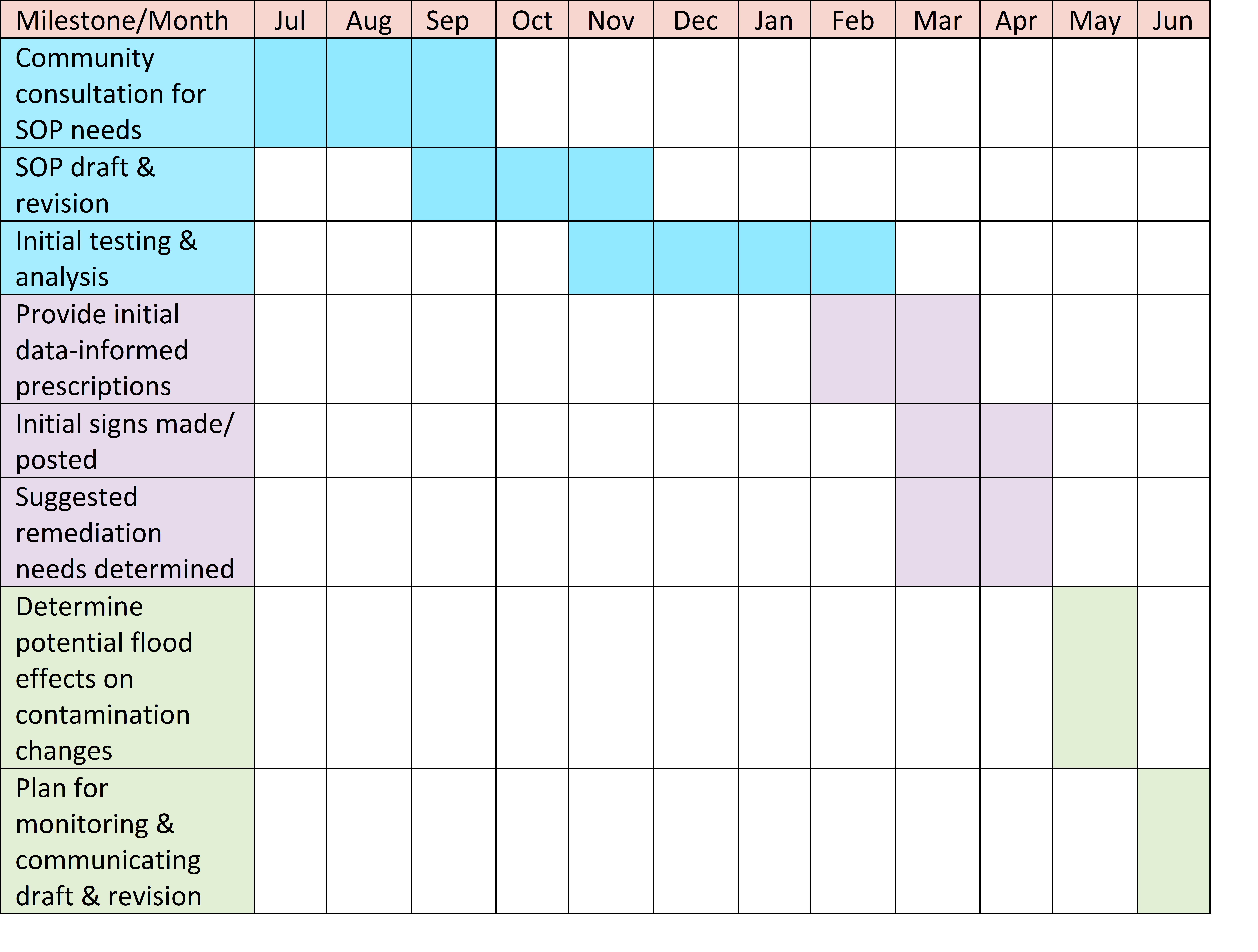
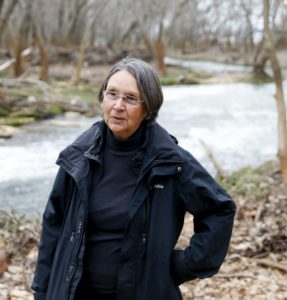
Rebecca Jim has served as LEAD Agency’s Executive Director since its incorporation in 1997. Holding a B.A. in Behavioral Sciences and M.A. in Education, Counseling, she was formerly the Indian Counselor for Miami Public Schools sponsoring the Cherokee Volunteer Society that started the Tar Creek Project. She asked Earl Hatley to serve as a consultant with the student group’s work, and then in 1997 they, with other residents, co-founded LEAD Agency. Rebecca is a member of the Cherokee Nation and is recognized as the Tar Creekkeeper by the Waterkeeper Alliance. She has co-edited Making a Difference at the Tar Creek Superfund Site, Community Efforts to Reduce Risk, and other publications featuring collected art, poetry, and writings that continue to inspire others to action.
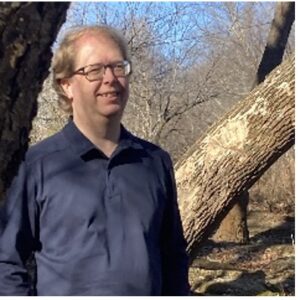
Martin Lively is the Grand Riverkeeper with LEAD Agency. He grew up in Miami, Oklahoma, and has family roots there going back four generations. He has supported LEAD Agency’s environmental justice work since the 1990s as a volunteer and a law school public service fellow intern. In his first career, Martin practiced law in Georgia for almost a decade. After moving back to Oklahoma in 2012, he renewed his ties with LEAD Agency, working as an AmeriCorps VISTA for three years before becoming the Grand Riverkeeper. Martin holds a B.A. in English from Grinnell College and a Juris Doctor, Certificate in Dispute Resolution, and a Public Service Fellow Certificate from The Ohio State University Moritz College of Law. When time allows, Martin can be found backpacking in the Ozarks or traveling the middle of the country on long-distance solo bicycle tours.
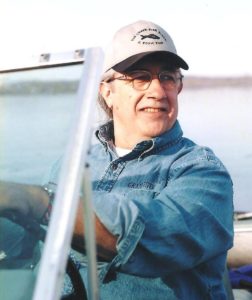
Earl L. Hatley is co-founder and president of LEAD Agency. He was the Executive Director for the Oklahoma Toxics Campaign when in 1993 he was asked by Rebecca Jim to become a technical advisor to her Cherokee Volunteer Society at the Miami High School. As more residents became involved, in 1997 LEAD Agency was incorporated. Earl was the first Board President for LEAD Agency until 2003 when he stepped down to become the Grand Riverkeeper. Earl is a well-trained organizer with 35 years of experience organizing and providing technical assistance to Indigenous and non-Indigenous non-profit groups and tribes in the US (including Alaska) and with academic training that includes an MA in Political Science and ABD in Environmental Science.
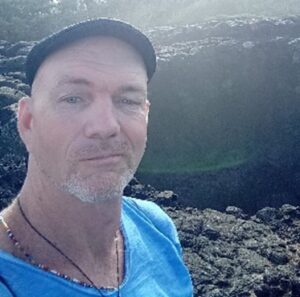
Dr. Bob Alexander is the Thriving Earth Exchange Community Science Fellow whose role is to facilitate a collaborative, co-developed community science project that results in positive steps toward addressing one or more of the most urgent priorities in the local community by connecting science to action. He is an independent researcher, trainer, consultant, and song and film writer, recording artist, and producer who has a PhD in Natural Resources and Environmental Management and has worked on projects involving participatory integrated disaster, climate change, and development related vulnerability reduction, and resilience strengthening for over 25 years. He focuses on prospective risk managed community development, community-based risk management, and community-based adaptation; livelihood, food, nutrition, and social service access security; socioeconomic vulnerability identification, analysis, assessment, and reduction; and effective risk and social and behavioral change communication and community engagement approaches.
One or possibly two scientists are needed to work with Rebecca, Martin, and other community members on three tasks. First, a scientist experienced using these XRF analyzers will need to develop an understanding of what types of XRF testing will be helpful toward potential end states for the project and write SOPs for doing this testing in language that the community members who will conduct it can understand and implement. Second, an expert on soil use and toxicology will inform guidance on how to translate this data into prescriptions that can be used for making community education signs on which areas are safe to do which practices in what amounts and for advocacy on which other areas need remediation to make them safe for such uses. Finally, a scientist will develop a plan with LEAD Agency regarding how and when to conduct this testing and analysis to best communicate science-based information to the public on how prescribed activities will change with changes in the levels of contaminants due to floods and other events. The community is open to the scientist/s being remote and to involving students in the initial testing, analysis, and SOP development step of the project.
Thriving Earth Exchange asks all technical partners to work with the community to help define a project with concrete local impact to which they can contribute as pro-bono volunteers and collaborators. This work can also position the scientists and communities to seek additional funding together for the next stage.
Interested in volunteering on this project? Apply now!
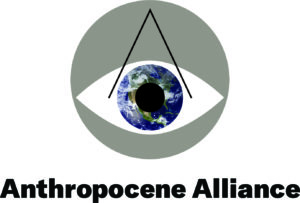
Anthropocene Alliance is the nation’s largest coalition of frontline communities fighting for climate and environmental justice composed of 70 communities in 22 states and Puerto Rico. They assist communities in understanding and addressing the impacts of flooding, water contamination, air pollution, and wildfires. The Anthropocene Alliance’s goal is to bring frontline communities together and amplify their voices so they can have safe, healthy, and equitable communities.
Buy-In Community Planning, Inc. (Buy-In) is a national 501(c)(3) organization that works with flood-prone communities in need of targeted, affordable services to permanently eliminate exposure to hazards through voluntary relocation assistance. Using the power of geospatial data and participatory planning, we help communities design better buyout programs that are transparent, equitable, and environmentally restorative to ensure that no household is left in harm’s way.
The Climigration Network brings together people with lived and learned expertise to advance transformative, community-led approaches to climate displacement and relocation in the US and its territories. Our members and partners are Indigenous leaders, community leaders, practitioners, policymakers, researchers, storytellers, artists, and more – working with collective, stubborn optimism towards our shared vision: A world where communities, cultures, and ecosystems are safe from climate risk.
The National Park Service preserves unimpaired the natural and cultural resources and values of the National Park System for the enjoyment, education, and inspiration of this and future generations. The National Park Service cooperates with partners to extend the benefits of natural and cultural resource conservation and outdoor recreation throughout this country and the world.
(c) 2024 Thriving Earth Exchange